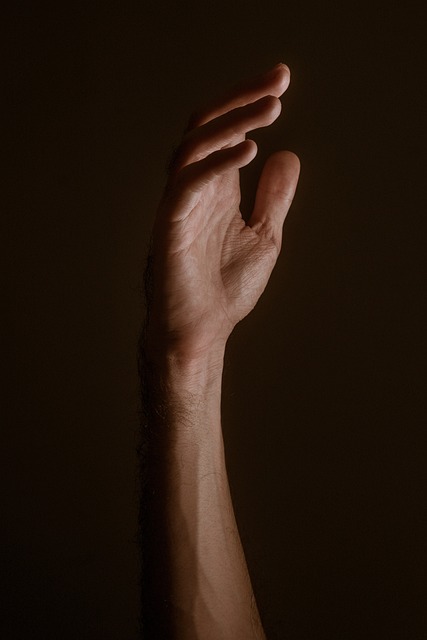The world’s Largest Biohybrid Robot Hand represents a monumental leap forward in robotics. This incredible creation, roughly the size of a newborn’s hand, boasts five independently functioning fingers powered by cultivated human muscle tissue. Previously, biohybrid actuators were limited to a mere centimeter due to nutrient delivery and muscle fiber alignment challenges; however, this groundbreaking research, a collaboration between the University of Tokyo and Waseda University, cleverly overcomes these obstacles. The innovative design allows for significantly larger and more capable biohybrid actuators, promising a revolution in prosthetics and beyond.
Table of Contents
Consequently, the implications of this Largest Biohybrid Robot Hand extend far beyond technological advancement. It signifies a crucial step towards creating prosthetic limbs that integrate seamlessly with the human body, offering unprecedented dexterity and functionality. This achievement, detailed in Science Robotics, showcases ingenious bioengineering, meticulously bundling muscle tissue to optimize nutrient delivery and fiber alignment. The result? A hand that mimics natural muscle fatigue, exhibiting performance decline after about ten minutes of continuous use, followed by an hour-long recovery period. This remarkable fidelity further underscores the potential of this biohybrid system.
We also Published
The Genesis of Biohybrid Robotic Hands
The realm of biohybrid robotics, a fascinating confluence of biological and artificial systems, has witnessed a momentous stride with the unveiling of the world’s largest biohybrid robotic hand. This remarkable creation, a collaborative effort between the esteemed institutions of the University of Tokyo and Waseda University, stands as a testament to human ingenuity and the boundless potential of interdisciplinary research. Measuring a remarkable 18 centimeters—approximately the size of a newborn’s hand—this marvel of engineering boasts five independently functioning fingers, each powered by meticulously cultivated human muscle tissue. This achievement marks a significant departure from previous limitations in biohybrid actuator size, which were previously constrained to a mere 1 centimeter due to challenges in nutrient delivery and maintaining muscle fiber alignment. The innovative “sushi roll” design employed in this groundbreaking research elegantly addresses these challenges, enabling the creation of significantly larger and more capable biohybrid actuators. The implications of this advancement extend far beyond the realm of mere technological progress; it represents a pivotal step towards creating prosthetic limbs that seamlessly integrate with the human body, offering unparalleled levels of dexterity and functionality. This groundbreaking technology promises to revolutionize the field of prosthetics, offering amputees a level of functionality previously unimaginable.
The intricate design of this biohybrid hand, detailed in a recent publication in Science Robotics, showcases a remarkable feat of bioengineering. The researchers ingeniously bundled thin strands of cultured human muscle tissue into a configuration that optimizes nutrient delivery, preventing tissue necrosis and ensuring the precise alignment of muscle fibers—crucial factors that had previously hindered the development of larger biohybrid actuators. This innovative approach not only allows for the creation of larger actuators but also enhances their performance, resulting in longer contractions, greater force generation, and faster contraction rates. The hand, currently maintained in a nutrient-rich solution, is controlled through electrical stimulation of the muscle tissue. This sophisticated system mimics the natural fatigue experienced in human muscles, with the hand exhibiting a decline in performance after approximately 10 minutes of continuous activity, followed by a recovery period of about an hour. The ability to replicate this natural fatigue response is a significant achievement, further highlighting the remarkable fidelity of this biohybrid system.
Overcoming Size Limitations in Biohybrid Actuators
The creation of this 18-centimeter biohybrid hand represents a monumental leap forward in the field of biohybrid robotics, overcoming significant size limitations that have plagued the development of such systems for years. Previous attempts to create larger biohybrid actuators were hampered by the challenges of providing sufficient nutrients to the cultured muscle tissue while maintaining its structural integrity. The innovative “sushi roll” design employed in this research elegantly solves this problem by carefully arranging the muscle tissue in a manner that facilitates efficient nutrient delivery and prevents tissue death. This ingenious solution not only allows for the creation of larger actuators but also enhances their performance characteristics, resulting in longer contractions, greater force generation, and faster contraction speeds. The ability to create larger and more powerful biohybrid actuators opens up a wide range of new possibilities in the field of prosthetics, paving the way for the development of more sophisticated and functional artificial limbs. The implications extend beyond prosthetics, offering exciting prospects for advancements in areas such as drug testing and the development of advanced robotic systems.
The successful creation of this biohybrid hand demonstrates the potential of biohybrid robotics to mimic complex biological systems with remarkable accuracy. The ability to cultivate and integrate human muscle tissue into a robotic system allows for the creation of actuators that exhibit characteristics remarkably similar to those found in natural muscles. This includes the ability to generate force, contract and relax, and even experience fatigue, all of which are crucial for creating realistic and functional prosthetic limbs. The precise control over the movement of the fingers, demonstrated by the ability to manipulate small objects such as pipette tips, further highlights the sophistication of this technology. The research team’s success in overcoming the size limitations of biohybrid actuators is a significant milestone that paves the way for future advancements in this exciting field. The ability to create larger and more powerful biohybrid actuators opens up a wide range of new possibilities for applications in various fields, from prosthetics and drug testing to the development of advanced robotic systems.
Applications and Future Directions of Biohybrid Robotics
The development of this groundbreaking biohybrid hand holds immense promise for a multitude of applications, with the most immediate and impactful being the field of advanced prosthetics. The ability to create artificial limbs that mimic the functionality of natural limbs with remarkable precision opens up exciting possibilities for amputees, offering them a level of dexterity and control previously unimaginable. This technology could revolutionize the lives of individuals with limb loss, enabling them to perform tasks with greater ease and independence. Beyond prosthetics, this technology offers significant potential in the realm of drug testing and medical research. The ability to study the effects of drugs on human muscle tissue in a controlled environment could lead to significant advancements in the development of new therapies and treatments. The intricate workings of this biohybrid hand provide invaluable insights into the complexities of muscle tissue function, offering researchers a powerful tool for studying the effects of various stimuli on muscle behavior. This opens doors to understanding and potentially treating a wide range of muscle-related disorders.
The future of biohybrid robotics appears bright, with ongoing research focused on addressing current limitations and expanding the capabilities of these remarkable systems. Researchers are actively exploring ways to improve the durability and longevity of the cultured muscle tissue, aiming to create biohybrid actuators that can operate for extended periods without requiring replacement. Furthermore, efforts are underway to enhance the control and precision of these systems, enabling more complex and nuanced movements. The integration of advanced sensors and control algorithms could lead to the development of biohybrid limbs that exhibit even greater dexterity and responsiveness. The potential applications of this technology extend far beyond prosthetics, with researchers exploring its use in areas such as robotics, rehabilitation, and even space exploration. The development of more robust and sophisticated biohybrid systems promises to revolutionize various fields, improving human lives and pushing the boundaries of what’s possible.
Ethical Considerations and Societal Impact
The rapid advancements in biohybrid robotics raise important ethical considerations that must be addressed proactively. The use of human-derived tissues in robotic systems necessitates careful consideration of the ethical implications, including issues of consent, tissue sourcing, and potential risks associated with the technology. Robust ethical guidelines and regulatory frameworks are crucial to ensure the responsible development and deployment of biohybrid technologies, safeguarding the well-being of individuals and society as a whole. Open and transparent dialogue among scientists, ethicists, policymakers, and the public is essential to navigate the complex ethical landscape of this emerging field. This collaborative approach will ensure that the benefits of biohybrid robotics are realized while mitigating potential risks and ensuring equitable access to these transformative technologies.
The societal impact of biohybrid robotics is likely to be profound, with the potential to revolutionize healthcare, improve quality of life, and create new economic opportunities. The development of advanced prosthetics could significantly enhance the independence and quality of life for millions of individuals with limb loss. Furthermore, the applications of biohybrid technology in drug testing and medical research could lead to breakthroughs in the treatment of various diseases and conditions. However, it is crucial to ensure that the benefits of this technology are accessible to all members of society, regardless of socioeconomic status or geographic location. Addressing issues of equity and access will be essential to harnessing the full potential of biohybrid robotics for the betterment of humanity. Careful consideration of the societal implications, coupled with proactive measures to address potential challenges, will be crucial in ensuring that this transformative technology benefits all of humankind.
We also Published
RESOURCES
- Researchers in Japan Develop Robot Hand with Cultured Muscles
- Biohybrid hand actuated by multiple human muscle tissues
- Biohybrid hand reaches ahead with muscle tissue actuators
- Biohybrid hand gestures with human muscles | The University of Tokyo
- Biohybrid hand gestures with human muscles | EurekAlert!
- Biohybrid hand actuated by multiple human muscle tissues
- Biohybrid hand uses sushi-like rolls of lab-grown human muscle to move …
- Japanese research team develops a remarkable biohybrid robot hand
- PDF Biohybrid hand uses sushi-like rolls of lab-grown human muscle to move …
- Groundbreaking biohybrid robot hand developed by Japanese team






0 Comments